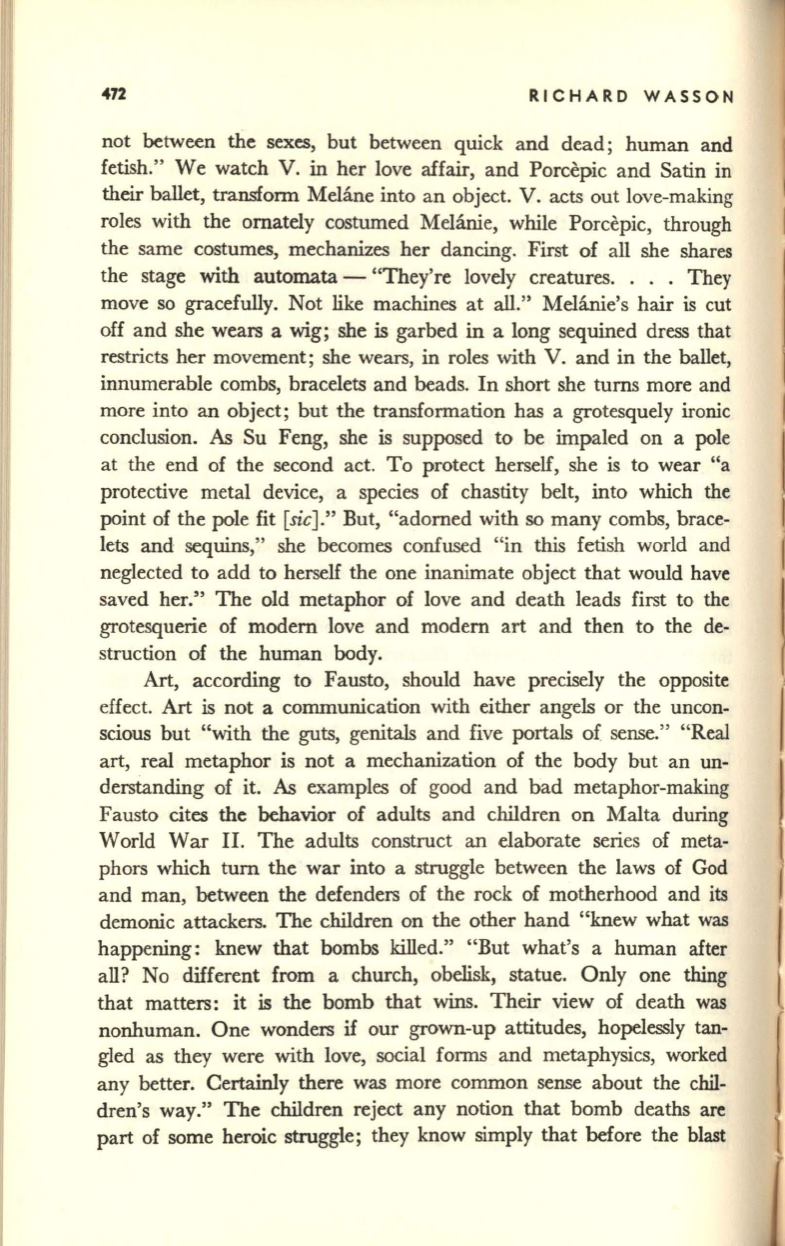
472
RICHARD
WASSON
not between the sexes, but between quick and dead; human and
fetish." We watch V. in her love affair, and Porcepic and Satin in
their ballet, transform Melane into an object. V. acts out love-making
roles with the ornately costumed Melanie, while Porcepic, through
the same costumes, mechanizes her dancing. First of all she shares
the stage with automata - "They're lovely creatures. . . . They
move so gracefully. Not like machines at
all."
Melanie's hair is cut
off and she wears a wig; she is garbed in a long sequined dress that
restricts her movement; she wears, in roles with V. and in the ballet,
innumerable combs, bracelets and beads. In short she turns more and
more into an object; but the transformation has a grotesquely ironic
conclusion.
As
Su Feng, she is supposed to be impaled on a pole
at the end of the second act. To protect herself, she is to wear "a
protective metal device, a species of chastity belt, into which the
point of the pole fit
[sic]."
But, "adorned with so many combs, brace–
lets and sequins," she becomes confused "in this fetish world and
neglected to add to herself the one inanimate object that would have
saved her." The old metaphor of love and death leads first to the
grotesquerie of modem love and modem art and then to the de–
struction of the human body.
Art, according to Fausto, should have precisely the opposite
effect. Art is not a communication with either angels or the uncon–
scious but "with the guts, genitals and five portals of sense." "Real
art, real metaphor is not a mechanization of the body but an un–
derstanding of it.
As
examples of good and bad metaphor-making
Fausto cites the behavior of adults and children on Malta during
WorId War II. The adults construct an elaborate series of meta–
phors which tum the war into a struggle between the laws of God
and man, between the defenders of the rock of motherhood and its
demonic attackers. The children on the other hand "knew what was
happening: knew that bombs killed." "But what's a human after
all? No different from a church, obelisk, statue. Only one thing
that matters: it
is
the bomb that
wins.
Their view of death was
nonhuman. One wonders if our grown-up attitudes, hopelessly tan–
gled as they were with love, social forms and metaphysics, worked
any better. Certainly there was more common sense about the chil–
dren's way." The children reject any notion that bomb deaths are
part of some heroic struggle; they know simply that before the blast


